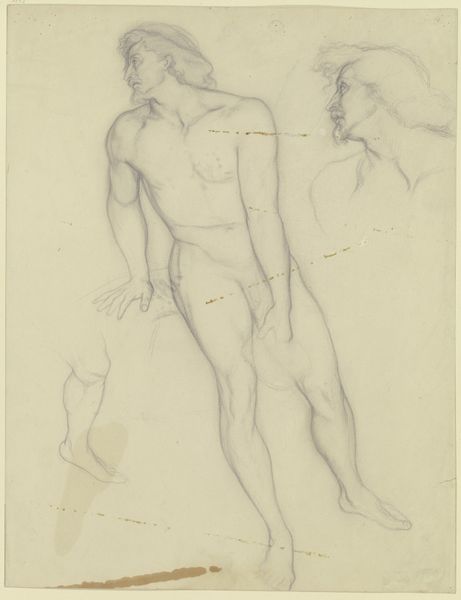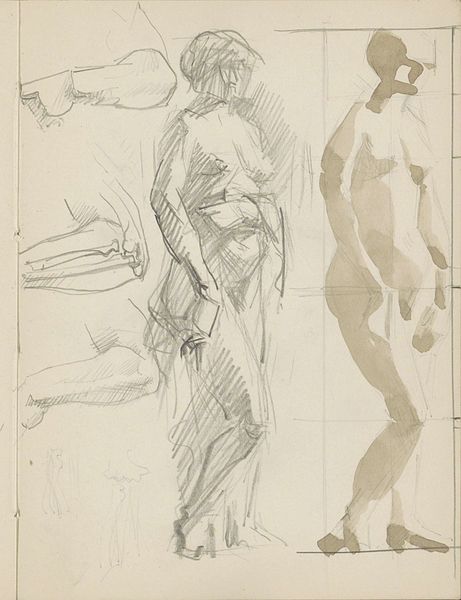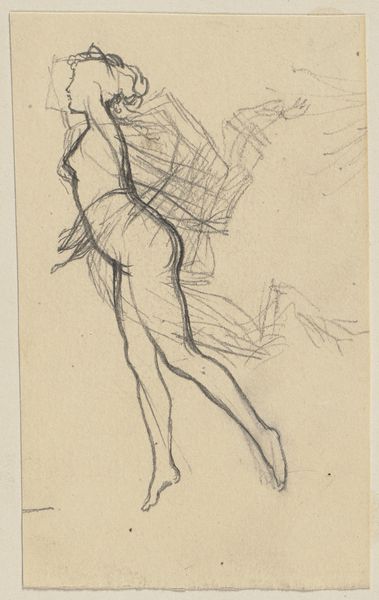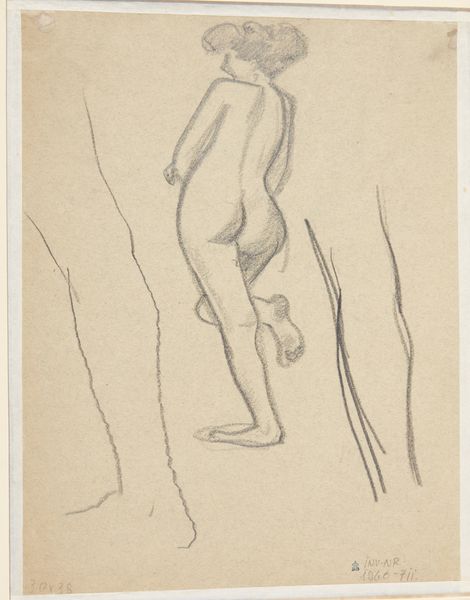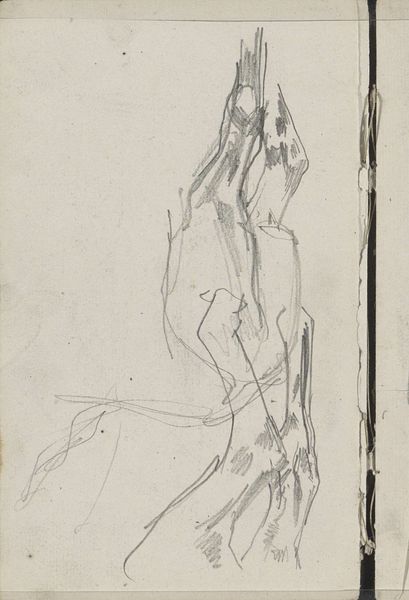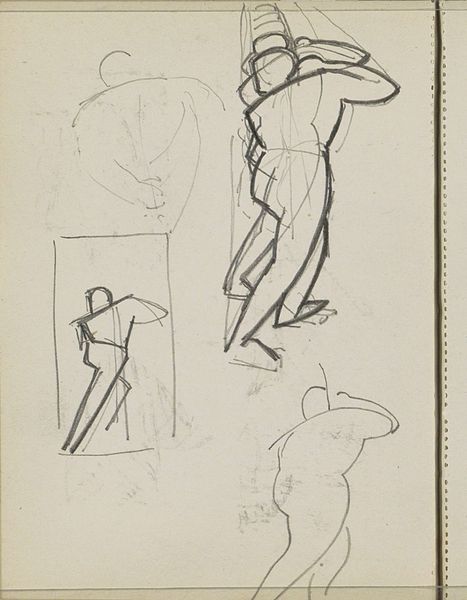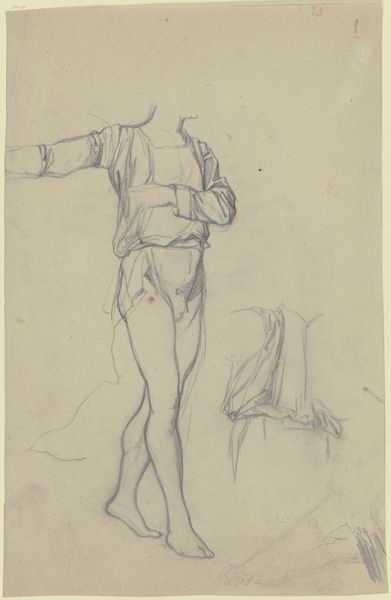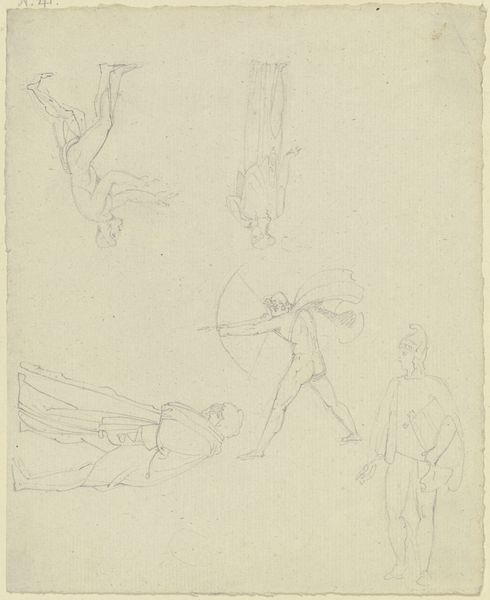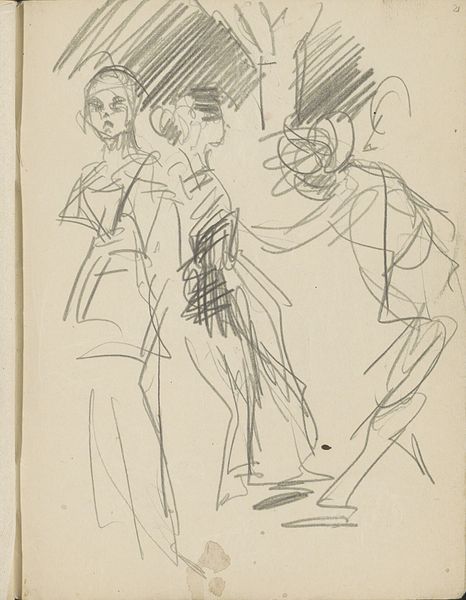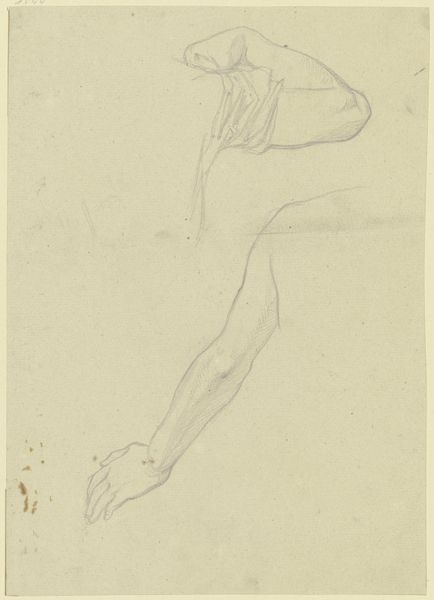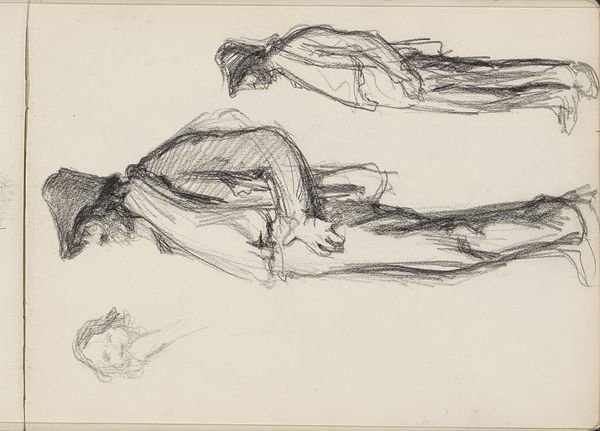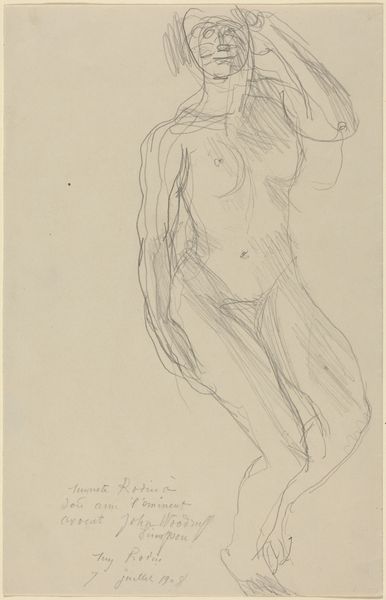
drawing, paper, ink
#
portrait
#
drawing
#
16_19th-century
#
figuration
#
paper
#
ink
#
sketch
#
line
#
academic-art
Copyright: Public Domain
Curator: Here we have a drawing from the Städel Museum collection entitled "Male Figure". It is an ink drawing on paper, and while it isn't definitively dated, its style places it somewhere within the 19th century. Editor: My first thought is about the figure’s vulnerability. It's unfinished, sketched, but also raw, and immediate, like a glimpse into an artist's process of constructing the ideal human form, maybe for an historical scene. Curator: Indeed, the sketch-like quality really points to academic art traditions. Artists were trained through the study of anatomy and classical forms. Sketches such as these were a step to a complete piece of art with social goals, maybe the propagation of some kind of heroic narrative. Editor: Yes, and that careful delineation of muscle structure in one of the arm studies seems crucial. There's a precision in its execution contrasting with the overall loose, exploratory quality of the work, it conveys ideals of power, or virility. In academic art, such depictions are crucial to legitimize positions of command. The pharaohs come to my mind as someone who have consistently sought the artistic display of strength. Curator: The study of the male form, in particular, became deeply intertwined with displays of power throughout much of the 19th century in Europe. Its public exhibition in official venues contributed to an economy of symbolic dominance. This idea of an ideal man shaped civic discourse around class, gender and national identity. It makes one wonder how the figure in the sketch would be clothed and what narrative it would fit. Editor: The clothing seems hinted at through the light, tentative strokes around his lower body. And thinking about narrative… what values and meanings would have been embedded? Is it a representation of moral uprightness? Is he standing for resilience? The images don’t come by themselves; in our minds, the figure gains flesh through social, political, and historical implications. Curator: Exactly! It reminds us how even seemingly simple figure drawings were actually quite loaded. The image may not have fulfilled any public role as a preparatory sketch. But it gained such a status and value now it is hanging in a Museum. Editor: Ultimately, this image has opened up layers of potential narratives and cultural values embedded within classical ideals, highlighting the ongoing importance of human figuration.
Comments
No comments
Be the first to comment and join the conversation on the ultimate creative platform.

